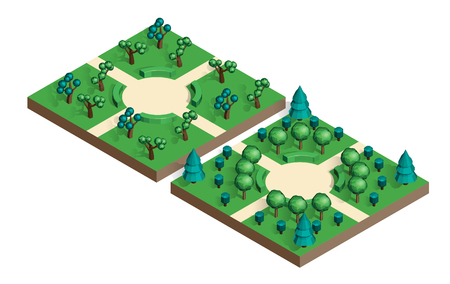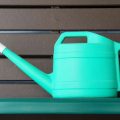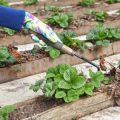1. Planning and Permits
Before you start building your DIY garden shed, its important to do some planning and check local regulations. In the U.S., most towns and cities have zoning laws and building codes that may affect where and how you can build a shed. You might also need a permit depending on the size and location of your shed.
Understand Local Zoning Laws and Building Codes
Zoning laws determine what types of structures can be built in specific areas, while building codes ensure that the construction is safe and up to standard. Heres what to look out for:
| Requirement | What to Check |
|---|---|
| Zoning Restrictions | Check if sheds are allowed in your backyard and how close they can be to property lines. |
| Building Permits | Some areas require permits for sheds over a certain size (often 120 sq ft or more). |
| Utility Lines | Make sure your shed wont sit on top of water, gas, or electric lines. |
Assess Your Backyard Space
Next, take a good look at your backyard. You’ll want to choose a flat, well-drained area that’s easy to access. Think about how much space you need not just for the shed, but also for moving around it and future landscaping.
Key Questions to Ask Yourself:
- How much storage space do I really need?
- Will the shed be used just for tools, or also as a workspace?
- Is there enough sunlight or shade depending on its purpose?
- Can I access it easily year-round?
Determine Size, Location, and Purpose
The function of your shed will help decide its design and size. Here are a few examples:
| Shed Purpose | Recommended Features |
|---|---|
| Tool Storage | Shelving units, compact size (6×8 ft) |
| Lawn Equipment | Larger door, floor space for mower (8×10 ft) |
| Garden Workspace | Windows for natural light, workbench (10×12 ft or larger) |
Taking time during this planning stage will save you headaches later. Once you’ve figured out zoning rules and picked the perfect spot in your yard, you’ll be ready to move on to designing your shed!
2. Choosing Materials and Tools
Before you start building your garden shed, its important to choose the right materials and gather all the tools youll need. Using the right supplies will ensure your shed is strong, weather-resistant, and lasts for years. Lets break it down into two parts: materials and tools.
Common Construction Materials
Your choice of materials will affect both the durability and appearance of your shed. Here are some common options used in backyard sheds across the U.S.:
| Material | Description | Why Its Used |
|---|---|---|
| Treated Lumber | Wood thats been treated to resist moisture, decay, and insects. | Ideal for framing and base structure because it lasts longer outdoors. |
| Plywood (Exterior Grade) | Layers of wood veneer glued together, made to withstand outdoor conditions. | Used for walls, floors, and roofs due to its strength and affordability. |
| Roofing Shingles or Metal Roofing | Asphalt shingles are common; metal roofing offers longer lifespan. | Protects the shed from rain, sun, and snow; adds curb appeal. |
| Concrete Blocks or Gravel | Used as a foundation base under the shed floor frame. | Keeps shed level and helps with drainage to prevent water damage. |
Essential Tools for Shed Building
You dont need fancy tools to build a basic garden shed—just the essentials that most DIYers already have or can easily get at a home improvement store like Home Depot or Lowes.
| Tool | Purpose |
|---|---|
| Tape Measure | Measures wood pieces accurately before cutting. |
| Circular Saw or Handsaw | Cuts lumber and plywood to size. |
| Power Drill/Driver | Makes holes and drives screws quickly and securely. |
| Hammer | For nailing together wood parts manually if not using screws. |
| Level | Keeps everything straight so your shed doesnt lean or sag. |
| Safety Gear (Gloves, Safety Glasses) | Keeps you protected while working with tools and materials. |
A Quick Tip:
If youre new to DIY projects, consider borrowing or renting tools you don’t already own. Many local hardware stores offer rental services so you can save money while still getting the job done right.
Ready for the Next Step?
Once youve chosen your materials and gathered your tools, youre ready to move on to preparing the site where your shed will sit. That’s coming up next!

3. Building the Foundation
Before you start putting up walls or a roof, it’s important to build a strong and level foundation for your garden shed. A good foundation not only supports the structure but also helps prevent water damage and uneven settling over time. Lets explore a few common types of shed foundations and how to install them.
Types of Shed Foundations
There are several foundation options available, depending on your budget, soil type, shed size, and long-term use. Here’s a quick overview:
| Foundation Type | Description | Best For |
|---|---|---|
| Gravel Pad | A layer of compacted gravel that provides drainage and support. | Small to medium sheds; areas with good drainage. |
| Concrete Slab | A solid concrete base that is durable and permanent. | Larger sheds; long-term structures. |
| Skid Foundation | Treated wooden beams (skids) that allow mobility and airflow. | Sheds that may need to be moved; easy installations. |
Step-by-Step: How to Prepare and Level Your Site
No matter which foundation type you choose, the site preparation is key. Heres how to get started:
Step 1: Choose the Right Location
Select a flat area in your yard that gets proper sunlight and has good drainage. Make sure its accessible for tools and materials during construction.
Step 2: Mark Out the Shed Area
Use stakes and string to outline the perimeter of your shed. Measure diagonally from corner to corner to ensure your layout is square.
Step 3: Clear and Level the Ground
Remove grass, rocks, and debris from the area. Use a shovel or rent a sod cutter if needed. Then use a long board and level to check for high or low spots. Fill in or remove soil as necessary until the ground is even.
Selecting & Installing Your Foundation Type
Gravel Pad Installation
- Add landscape fabric to prevent weeds.
- Add 4–6 inches of crushed gravel within the outlined space.
- Tamp down the gravel using a hand tamper or plate compactor until its firm and level.
Concrete Slab Installation
- Create a form using 2x4s around your marked area.
- Add gravel as a base layer (about 2–3 inches) for drainage.
- Poor mixed concrete into the form, smoothing it with a screed board.
- Cure for at least 24–48 hours before building on top.
Skid Foundation Installation
- Lay pressure-treated wood skids directly on leveled ground or on concrete blocks for added stability.
- The skids should run parallel to each other with equal spacing (usually every 16″–24″).
- This allows floor joists to sit securely across them during framing.
A well-built foundation sets you up for success as you move forward with constructing your garden shed. With your base in place, youre ready to frame the floor in the next step!
4. Framing the Structure
Once your foundation is set, its time to start framing your DIY garden shed. This step involves building the floor, walls, and roof frames. Good framing ensures your shed is solid, level, and built to last.
Framing the Floor
Start by constructing the floor frame using pressure-treated lumber for durability. Typically, 2×6 boards spaced 16 inches apart work well for most small sheds. Use galvanized nails or deck screws to fasten the joists to the rim boards. Don’t forget to check that everything is square by measuring diagonally from corner to corner—the measurements should be equal.
Materials Checklist for Floor Framing
| Material | Recommended Size | Purpose |
|---|---|---|
| Joists | 2×6 | Main support beams across the floor |
| Rim Boards | 2×6 | Frame edges that hold joists together |
| Fasteners | Galvanized nails or deck screws | Securing joints and boards |
| Plywood Sheathing | 3/4″ exterior grade | Top layer of the floor frame |
Framing the Walls
The wall frames are typically built flat on the ground first and then lifted into place. Use 2×4 studs spaced 16 inches on center (OC). Make sure to leave space for windows and doors as per your design. Once each wall is framed, have a helper assist you in standing it up and securing it with temporary bracing until all walls are in place.
Tips for Wall Framing:
- Double-check door and window measurements before cutting.
- Add a double top plate for extra strength—especially important if you’re in an area with heavy snow or wind.
- Nail or screw through bottom plates into the floor joists to secure the walls.
Framing the Roof
Your roof style will determine how you frame it—gable roofs are common for garden sheds. Youll need to build rafters or trusses depending on your design. Use metal connectors at joints for added stability. As with other parts of framing, ensure everything is square before fastening permanently.
Roof Framing Components:
| Component | Description |
|---|---|
| Rafters/Trusses | Main angled supports forming the roof shape |
| Ridge Board (for gable roofs) | The central horizontal board where rafters meet at the peak |
| Purlins (optional) | Adds extra strength across rafters/trusses |
| Plywood Sheathing | Nailed over rafters to form roof deck before shingles or metal roofing is added |
Making Sure Its Square and Sturdy
A square structure is key to long-term durability. Use a carpenter’s square and measure diagonals of each section during assembly. If one diagonal is longer than the other, gently adjust until both match. Also, be sure all joints are securely fastened—using wood screws can provide better holding power than nails alone.
Quick Tips:
- Use construction adhesive along with screws for stronger joints.
- If working solo, use clamps or temporary braces to hold pieces steady while fastening.
- A level and tape measure are your best friends—use them often!
This step lays the foundation for attaching siding, roofing materials, and adding doors and windows later on. With a strong frame in place, youre well on your way to completing a sturdy and reliable garden shed.
5. Siding, Roofing, and Doors
Now that your garden shed frame is up, its time to give it some protection from the elements. Installing the right siding and roofing materials will help keep your shed dry and long-lasting, no matter the climate. Plus, well walk you through how to properly hang your doors so everything fits snug and looks great.
Choosing the Right Siding
Siding not only makes your shed look good, but it also acts as a protective barrier against wind, rain, and pests. Depending on your location and budget, here are some common siding options:
| Material | Pros | Cons |
|---|---|---|
| Wood (e.g. T1-11) | Natural look, easy to paint or stain | Needs regular maintenance |
| Vinyl | Low maintenance, weather-resistant | Less natural appearance |
| Metal (aluminum or steel) | Durable, fire-resistant | Can dent or rust over time |
| Engineered wood | Resistant to rot and insects | Slightly more expensive than natural wood |
Installing Siding Panels
Start by attaching house wrap or a water-resistant barrier over the wall sheathing. Then align your siding panels starting from the bottom up. Make sure they overlap slightly to prevent water from getting in. Use galvanized nails or screws to secure them in place.
Selecting Roofing Materials
Your roof takes the brunt of harsh weather, so picking the right materials is key. Here are popular options:
| Roofing Type | Best For | Lifespan |
|---|---|---|
| Asphalt Shingles | Mild to moderate climates | 15–30 years |
| Metal Roofing Panels | Rainy or snowy regions | 30–50 years+ |
| Cedar Shakes | Drier areas with rustic style preference | 20–40 years with maintenance |
| TPO or Rubber Membrane (for flat roofs) | Flat-roof designs in varied climates | 20–30 years |
Installing the Roof
If youre using shingles or metal panels, install roofing felt first for added moisture protection. Start at the bottom edge of the roof and work upward, overlapping each row. Cap it off with ridge caps if needed.
Hanging the Shed Doors Properly
The doors are one of the most used parts of your shed, so they need to be hung straight and securely. Most DIYers choose pre-hung double doors or build simple swinging doors using plywood and framing lumber.
Steps to Hang Shed Doors:
- Check that your door opening is square using a level.
- Add door trim around the opening if desired for extra sealing and aesthetics.
- If building custom doors, frame them with 2x4s and cover with siding to match your shed.
- Use heavy-duty outdoor hinges—at least three per door—for stability.
- Screw hinges into both the door frame and shed wall studs for a strong hold.
- Add a latch system or padlock hasp for security.
- If needed, install weatherstripping around the edges to block out drafts and moisture.
Pro Tip:
If youre installing double doors, make sure theres a center stop board between them when closed. This helps keep them aligned and sealed tight.
Weatherproofing Your Shed Exterior
The final step is sealing everything up. Use exterior caulk around window frames, door trim, and any siding joints where water might sneak in. If you used wood siding, apply a good-quality exterior paint or stain plus sealant to protect it from sun and rain damage.
A well-sealed shed will last longer and keep your tools dry all year round!
6. Finishing Touches and Storage Ideas
Once the structure of your garden shed is complete, its time to add those finishing touches that make it both functional and visually appealing. This step not only enhances the look of your shed but also helps protect it from the elements and maximizes its usefulness for storage.
Add Windows for Light and Ventilation
Installing windows in your shed is a great way to bring in natural light, making it easier to see inside during the day without needing electricity. It also improves airflow, which helps reduce moisture buildup and keeps tools from rusting.
Tips for Adding Windows:
- Choose a location that gets good sunlight during the day.
- Use weatherproof caulking around the edges to prevent leaks.
- Consider using shatter-resistant glass or acrylic for safety.
Paint or Stain for Protection and Style
A fresh coat of paint or stain will protect your shed from rain, snow, and sun damage. Plus, it gives you a chance to match your shed’s look with your house or garden style. Choose outdoor-grade paint or wood stain designed for durability.
| Finish Type | Main Benefit | Recommended For |
|---|---|---|
| Exterior Paint | Strong weather protection with color options | Sheds made of plywood or composite materials |
| Wood Stain | Enhances natural wood grain while sealing surface | Sheds made of cedar, redwood, or treated lumber |
Clever Storage Solutions Inside Your Shed
Your garden shed isn’t just for storing tools—it can be an organized workspace too! Adding shelves, hooks, and bins helps keep everything in order so you can find what you need quickly.
Shed Storage Ideas:
- Wall-mounted shelves: Great for storing small pots, seed packets, and hand tools.
- Pegboards: Hang larger tools like rakes and shovels on hooks to save floor space.
- Bins and crates: Use stackable containers for storing fertilizers, gloves, or other gardening supplies.
- Corners and ceilings: Add corner shelves or overhead racks to use every inch of space efficiently.
A well-finished shed not only looks great in your backyard but also makes your gardening tasks easier by keeping everything protected, organized, and within reach.


